Personal Interviews Gain Insights to Community Perspectives
Interviews provide an emotional and thoughtful connection to others through discussing and sharing over topics that they might never have a chance to discuss otherwise.
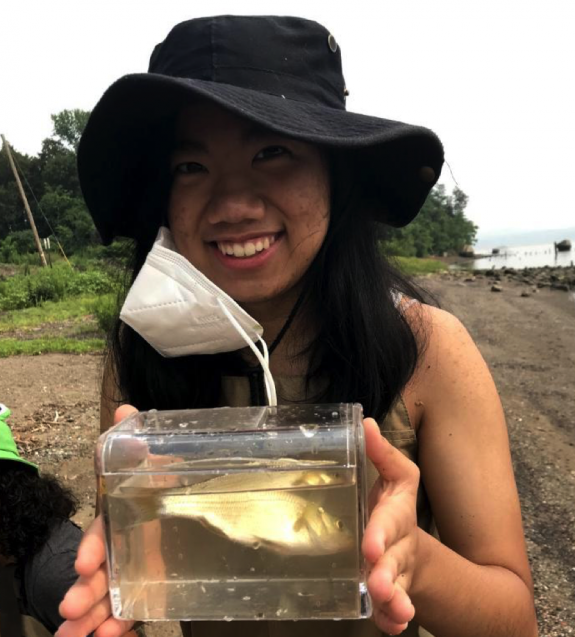
Introduction
How can we best connect and share the value of the Hudson River and broader environmental resources with our communities in a culturally meaningful way? This is a major mission of students participating in The Next Generation of Hudson River Educators of Lamont Doherty Earth Observatory. They have dedicated their summers to an immersive and unique online and field-based program to learn about the diverse and dynamic Hudson River ecosystem. After diving into Hudson River science through field investigations, the students were to develop different educational materials that they could share with their friends, families, and communities to build stronger Hudson River stewardship. However, in order to develop culturally relevant informational outputs, the students first needed to learn from their communities regarding their thoughts and existing relationships that they have with the Hudson. Students interviewed multigenerational community members from Rockland County, New York to collect personalized perspectives about the Hudson River, and to learn more about the people in their communities.
Below one of our students summarized her experience interviewing community members this summer.
Interviewing Is Listening and Learning From Personal Stories
Written by Kaitlyn Canivel, Student Albertus Magnus High School

In science, we learn that it is always good to ask questions. Why is the sky blue? Why is the Earth currently getting warmer each year? Why do people in our communities think the Hudson River’s water is contaminated and that even touching it could be hazardous? Many agree that the best way to learn is to seek answers through asking questions, and what better way to learn from our communities than to ask questions of the people around us, in order to understand their perspectives.
To uncover the best way to reach communities with meaningful educational resources about the Hudson River, interns from the Lamont-Doherty’s Next Generation of Hudson River Educators (Next Gen) interviewed the people around them. From friends to family, to neighbors and kind strangers, the Next Gen Interns inquired about their connections to, and views of, the Hudson River. The questions developed by the high school students addressed the interviewees’:
- Connection to nature
- Perspective of the Hudson
- Use of the river
- Connection to community
- Commitment to environmental stewardship
Through these interviews, the interns are able to develop a meaningful approach to educating their families, friends and communities about the Hudson River. While surveys may limit an individual to a ‘yes’ or ‘no’ response, interviews allow for people to speak their thoughts and defend their opinions. Through this method of data collection, the conversation itself allows space for honest perspectives to surface, often introducing new viewpoints to the interviewer, allowing them to consider new ways of viewing a specific issue or subject. This method can also provide an emotional and thoughtful connection to others through discussing and sharing over topics that they might never have a chance to otherwise. Finally, interviewing helps to identify trends in communities.
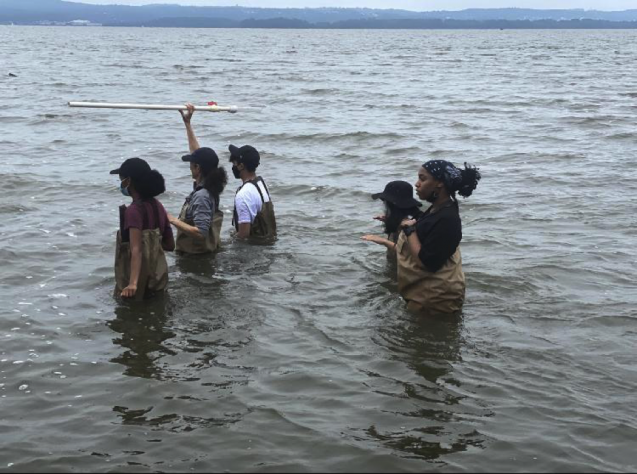
From the interviews that I personally conducted, I learned that people’s perception of the Hudson was largely based on their experiences growing up. Hobbies, careers, and upbringings seemed to have caused those of different communities to have varied perspectives about the estuary. Many hold longtime misconceptions about the cleanliness of the Hudson, convinced its color proves it is unhealthy, yet its color results from natural sources and river processes, and the Hudson is home to more than 200 species of fish! In short the Hudson is an amazing water body that is not polluted as people believe!
One artist that I interviewed spoke frequently of the beautiful appearance and yet the unfortunate green-brown color of the Hudson water. Her interview focused on the power of the river, yet because of the water color, she believes it is polluted. Two lovely kids that I met on the waterfront told me of their travels to France, Italy, and their home in the Dominican Republic. They emphasized the stark difference between the crystal clear water of the Italian canals and Caribbean sea against the brown-green color of the Hudson. Another woman I spoke with mentioned her job as a logistics coordinator, and said that the Hudson is most likely polluted because of the vessels and boats that pass through the river. As someone who works with trade, it makes sense that she focused on the trade and transportation aspect of the Hudson River and how that influences her perspective. Yet another individual, a man from upstate in Saratoga, grew up witnessing the heated talk of polychlorinated biphenyl or PCBs in the Hudson and the dredging debate in the upper river, which fueled his misconception that the Hudson is most surely not a place one could swim.
Those who live right on the waterfront share extremely different views from those who don’t. Many waterfront residents swim in the Hudson and speak of the fascinating creatures they have seen in the river. With the sights of seals, turtles, and plenty of fish, it’s hard for them to say that the Hudson is toxic and polluted.These deviations among the individuals teach us that it is the little things in our lives that make our experiences unique and that sharing our stories through interviews, and understanding the context for opinions and perspectives, is so important.
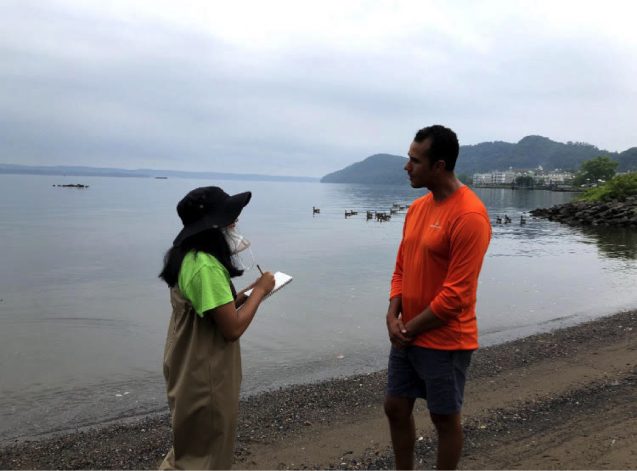
I have also learned through this process that almost everyone in our communities truly loves nature and wants to protect it. Each person was involved in outdoor activities such as fishing, biking, walking, boating, or swimming in the Hudson, and expressed a personal dedication to the protection of nature through reducing the negative impact of trash through recycling. Some local residents of Haverstraw, with their close connection to the Hudson River, have practiced environmental stewardship through picking up litter.
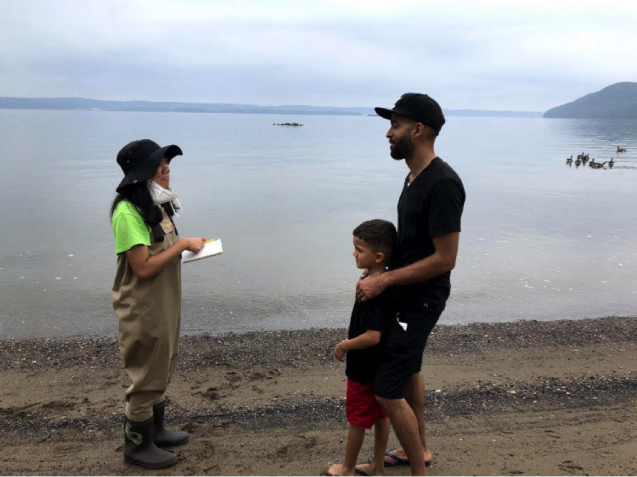
The interviewees strongly agreed that it is important to get people engaged with the environment through programs, since we protect what we understand and see. The best way to do that, they said, was to motivate people to interact with it hands-on.
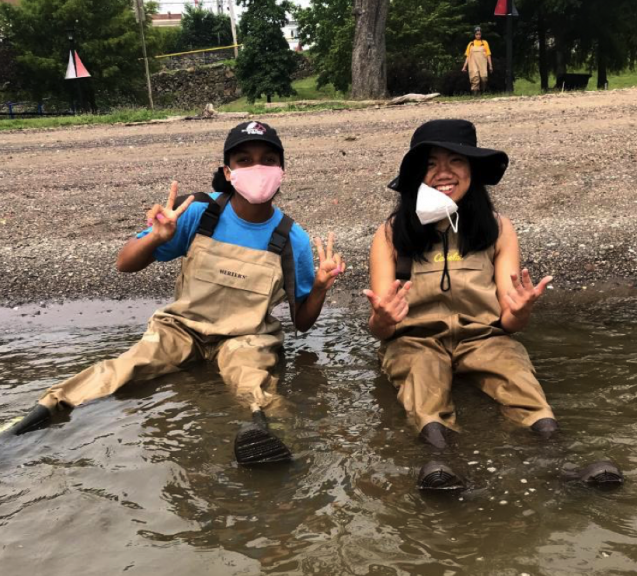
A majority of the interviewees did not know much about organizations that focused on researching, protecting, or educating about the Hudson River, such as Riverkeeper, Hudson River Sloop Clearwater, and the New York Department of Environmental Conservation Hudson River Estuary Program, or Lamont-Doherty. This is an important area for education we learned from the interviews. We also learned an effective approach to connect more people to the Hudson would be to use hands-on experiences. By using this method, many would be able to see the wonderful life that lives in the Hudson and appreciate its complex system, giving them a larger drive to protect this water body.
This holds true for many people who have interacted with the Hudson and have seen the biodiversity and life beneath the surface. One heartwarming moment was when we saw a young boy from Haverstraw develop a connection with a Florida soft-shelled turtle we caught at Emeline Park waterfront. During our interview, I saw him find a chip bag on the beach, and he quickly ran to the garbage to dispose of it correctly.“We don’t litter,” he said, “because it’s bad for the animals.
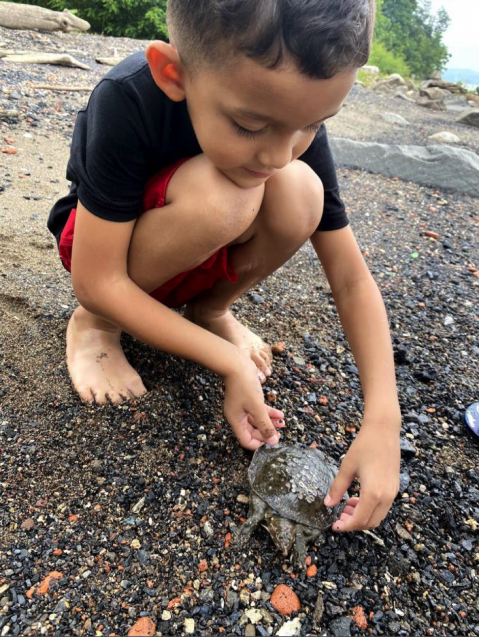
I personally can also say that this lesson holds true for me as well. After really seeing life in the Hudson for the first time through this program, my passion for protecting the environment has only grown stronger. After analyzing the data from the interviews I conducted, I found that being involved with nature and truly being immersed in it with hands-on education can instill a motivation to protect the life and environment around us. We realize that we aren’t so different from the life we see day-to-day: the trees that love to get some sun, the fish that keep swimming and moving along in life, and the animals that protect their young. Although we all lead different stories, we are all connected by our love for nature, and together, we can help create a better Earth for all life to live in.
From Lamont’s Next Gen program, I learned how valuable interviewing is as a way of gathering information. By understanding the context of everyone’s perspectives of the Hudson River, it has allowed me to observe small, important details that have played a major role in people’s opinions of the water body– details that I could not have seen if I used a survey or a different approach. These conversations have also made me feel more connected to the people around me, listening to their stories. The interviews have made me realize that everyone’s perspective of the Hudson, positive or negative, is influenced by their livelihoods. However, although we all lead different lives, we are all connected by our love for nature, and together, we can help create not just a better Hudson but a better Earth for all life to live in.
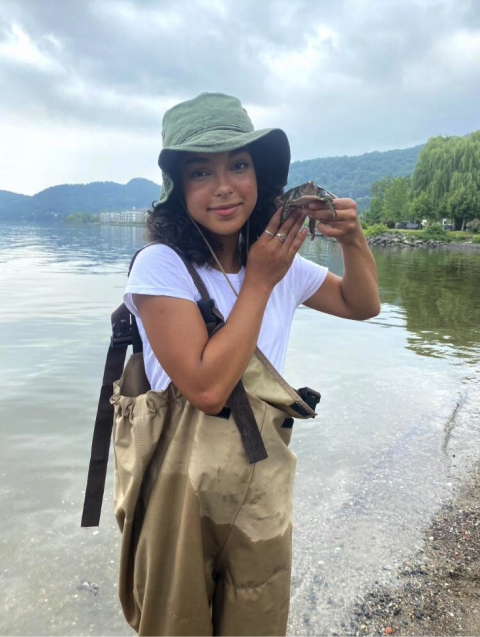
Conclusion:
The Next Generation of Hudson River Educators Program not only provided students with a unique and immersive learning experience but also provided them with a more well rounded understanding and connection to the residents in Rockland County. Through interviewing, they have walked away with knowledge and skills in public speaking and community outreach. Documenting community perspectives and experiences can then be used as a strategy for creating solutions to educate community members about the Hudson River watershed, bridge communities together, and bring people to their local waterfront.
—Introduction and conclusion written by Charity Dikson, undergraduate near peer mentor from the Rockland Conservation & Service Corps.
See other blogs from the Next Gen Program “Issues of Inequity Explored by the Next Generation of Hudson River Educators”
Funders include.
Lamont’s Next Generation of Hudson River Educators Program is a program funded through a grant from the NYS DEC, with support from Old York Foundation, the Henry L. and Grace Doherty Charitable Foundation, Inc. and additional student support from the NSF INCLUDES program. For six weeks this summer the program ran a hybrid format with 2 field days (with teams in both Piermont and Haverstraw NY) and 3 virtual days each week. Eight high school students joined two Rockland Conservation Corps members and Lamont’s Laurel Zaima and Margie Turrin for an in depth experience.
